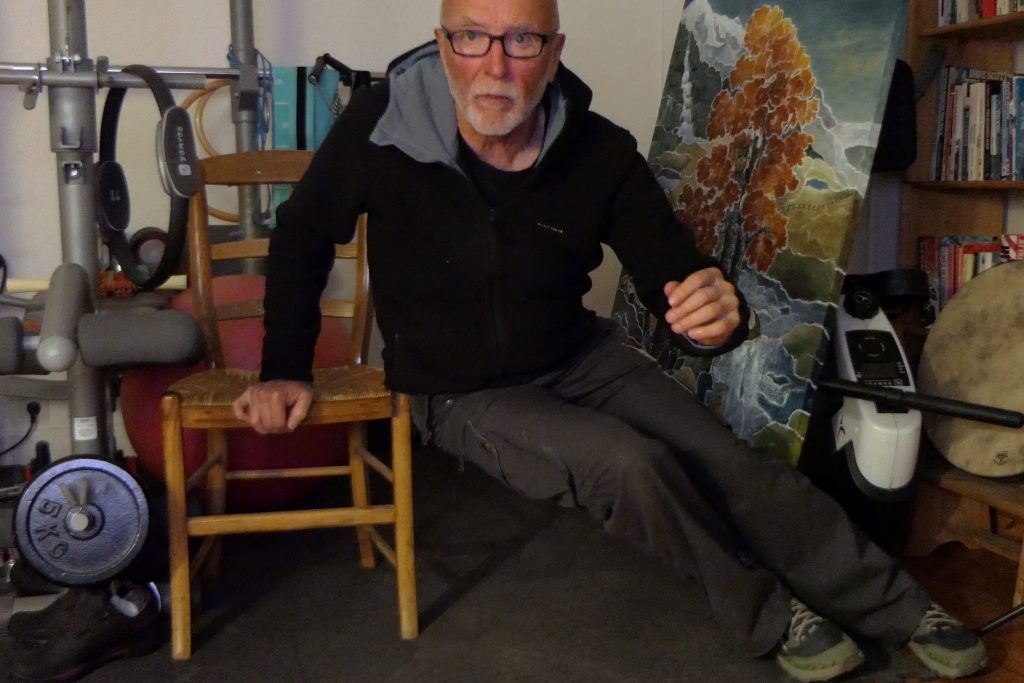Ski Boot Alignment
Good quality ski boots have the ability to adjust the angle of the shafts laterally so that they can conform accurately with the skier’s morphology.
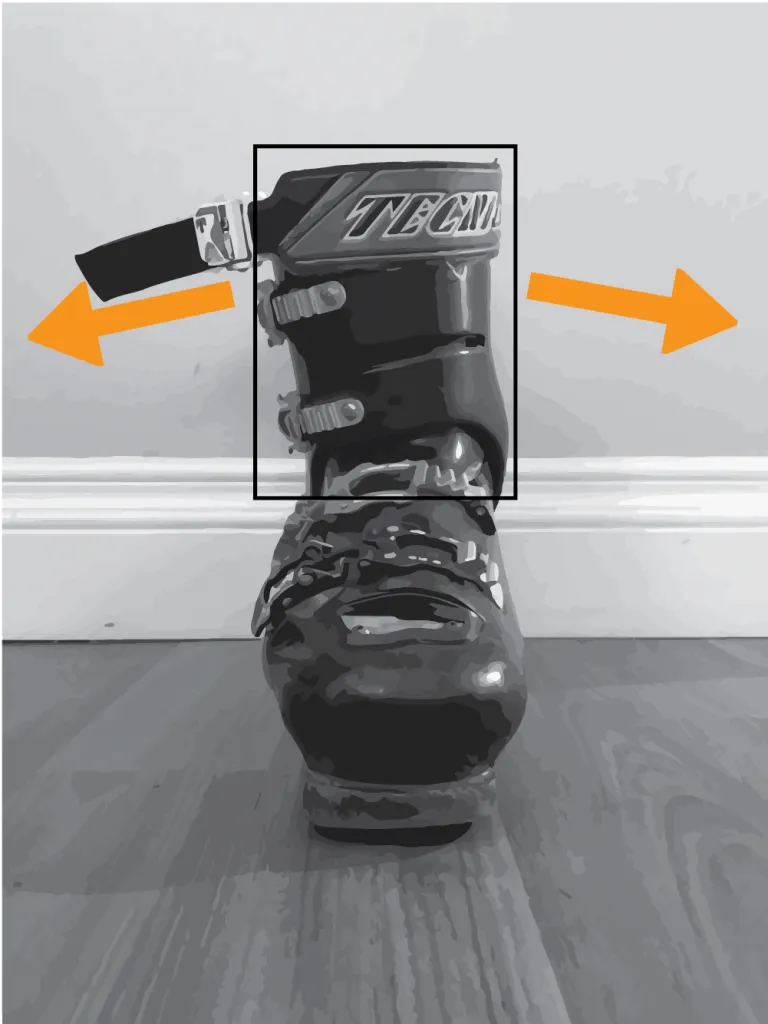
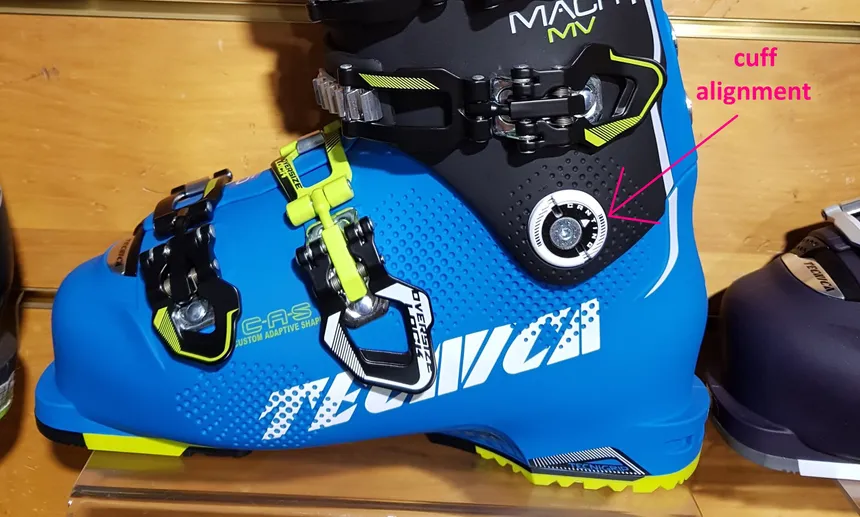
Shops always have you standing in the boots and bending the ankles, knees and hips to assess whether or not alignment is correct. Sometimes they even prepare supportive footbeds to be added and have special contraptions that you can stand on – but the approach is completely wrong (most of the time).
Around 1995 I figured out the right way to align – it’s done sitting on the edge of a bench/chair with the legs completely straight out in front (knee joints must be totally straight) – no weight on them – feet hip width apart (parallel) – toes vertically aligned (not with the toes rolled inward or outward) and hip joint flexed with the lower back straight and upright. The soles of the boots when correctly aligned are flat.
The left image shows boots that need the cuffs canted toward the outside so the soles can be flat. If there is no canting mechanism or appropriate tool available then cutting cardboard or plastic shims to insert on the inner side of the shaft between the shell and the inner boot will have the same canting effect (this was done with the boots below as a temporary measure). The skier previously had trouble gripping with the inner edges when skating and had developed a very wide stance to compensate for the lack of edge grip and response. Sometimes people (often women) can have the opposite problem with the ski boot too much on edge – so canting the shaft inwards is necessary instead.
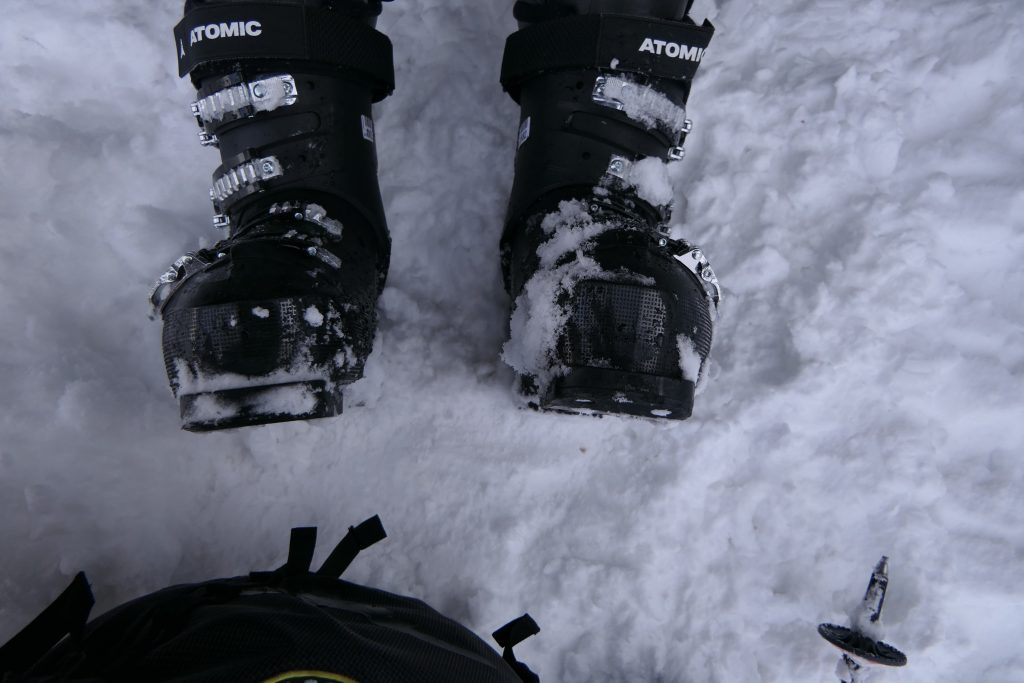
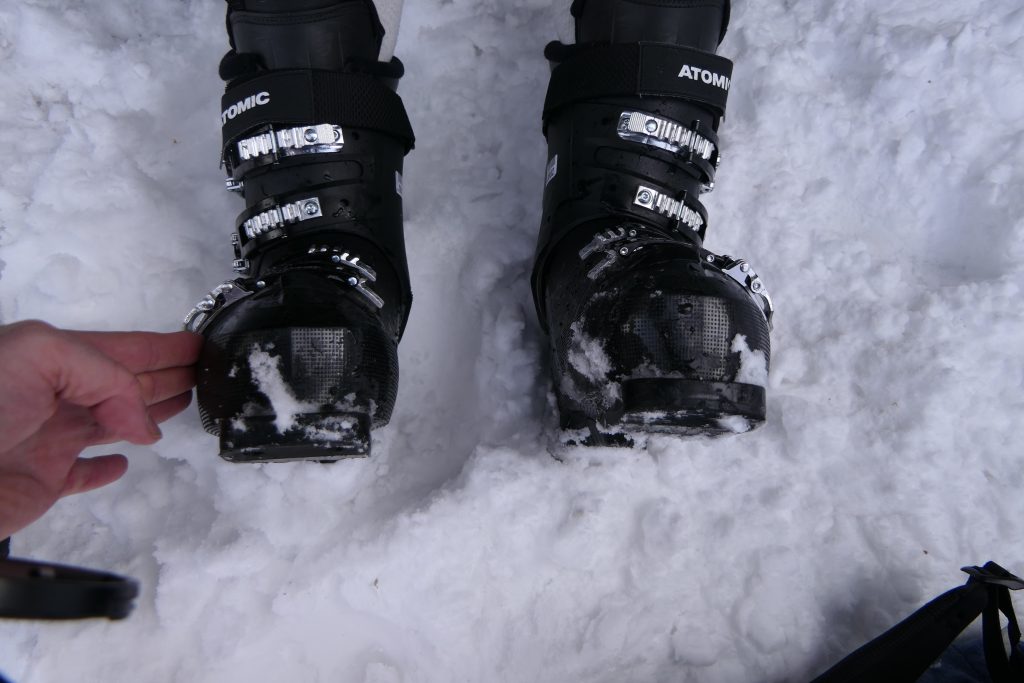
Richard’s boots before re-aligning…
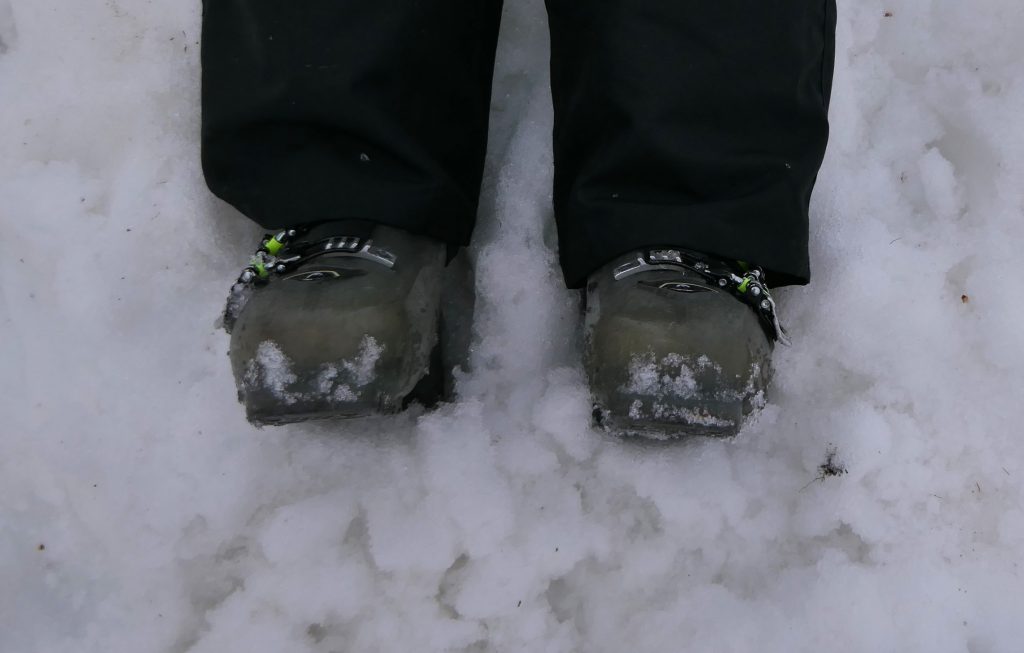
Body Management (Hip Angulation)
Take a look at the two Olympic champion skiers in the photograph below.
Killy’s image from the 1960s has his chest facing downhill whereas Noel’s image from 2022 has his chest facing forward. What Killy is doing destroys your lower back and is probably why he never went on skis again after he stopped racing.

Protecting the Spine
- Hold the front of the pelvis up – aiming for “neutral pelvis”
- During the turn pull the outer hip backwards so that the ski doesn’t pull it in front of your ribs
- Look for a stretch between the ribs and hip joint
- Look for a reflex contraction of the lower abdominals – the postural reflex
- Keep the shoulders/chest following the skis (to some degree)
- Always “counter turn” the pelvis more than the chest/shoulders (It’s only the pelvis that should “face downhill”)
- Pulling the hip backwards also prevents both hip rotation and full upper body rotation
Source of Hip Angulation
The upper body needs to tilt forward over one hip joint – then rotate around it. This is in addition to pulling back the outside hip etc.
The body shape produced alters the location of the centre of mass enabling pressure on the ski fronts and also greater agility both into and out of turns – and pole planting if the skis are swinging laterally.
The hip angulation also provides flexion of the hip joint that gives absorption of shocks. Increased angulation also increases the edge angle of the skis to the snow and may alter the turn radius and grip.
Angulation when upright and pivoting has another function – when ANTICIPATING the next turn it is used to get the Centre of Mass out of the existing turn (by tilting the torso forward at the hip ) and letting the Centre of Mass move over the skis to plant the ski pole downhill for a strong, clear and definite support.
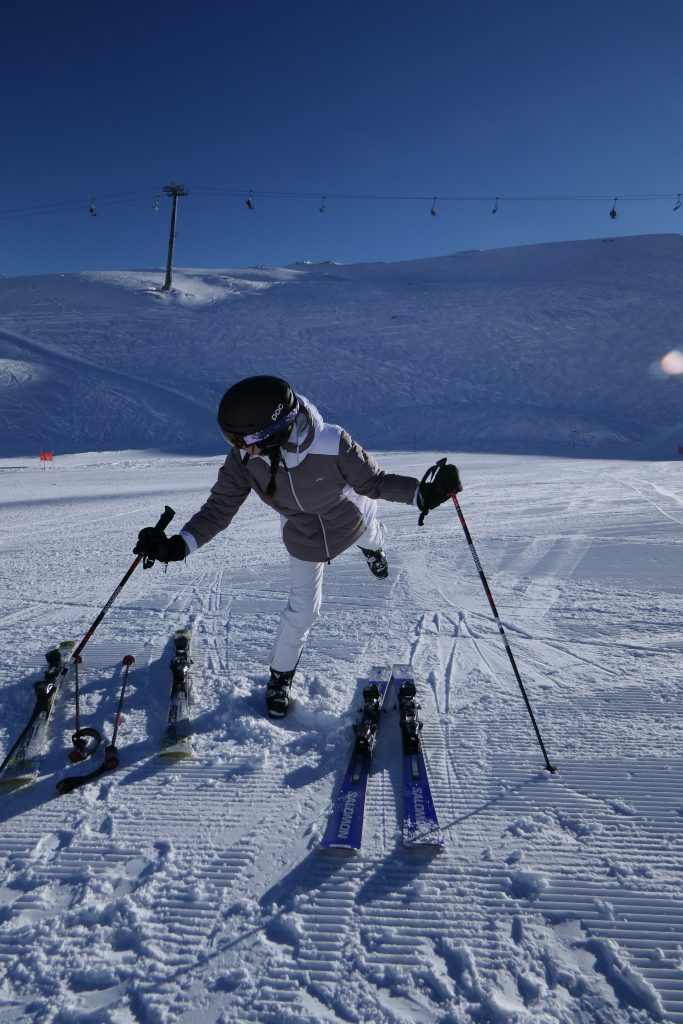
When the entire body inclines into the turn with hip angulation present this below is what it looks like.

